I have a jam-packed disk drive on my PC containing many textures and images, and these resources are frequently utilized in my motion graphics and VFX work, serving various purposes like displacement maps, motion backgrounds, composite elements, or simply adding character to solid colors. It’s surprising how a handful of texture JPEGs can transform a monotonous animation.
Considering that many creative platforms offer textures for free, you might question why I bother collecting my own. Well, that’s precisely why I do it. Similar to how everyone used VideoCopilot freebies in the late 2000s, I often repeatedly come across the same textures, especially when it comes to motion background textures.
With summer right around the corner, some of you may be planning trips to the beach or vacationing near bodies of water. While I don’t advise bringing your work along and upsetting your family during the holiday, if you have a camera, why not keep an eye out for textures that you wouldn’t typically encounter back home?
While your initial inclination may be to capture snapshots of sand, let’s explore a few less obvious examples.
Shipwreck Remains Textures
At first, the idea of a stranded boat or ship on a sandy beach may evoke a negative image, disrupting the tranquility of the surroundings. However, when the wrecked vessel happens to be an old wooden ship, it introduces a unique aesthetic that is rarely found elsewhere. One of my beloved Welsh beaches harbors an ancient shipwreck; its skeletal remnants have become an integral part of the beach’s scenic landscape.
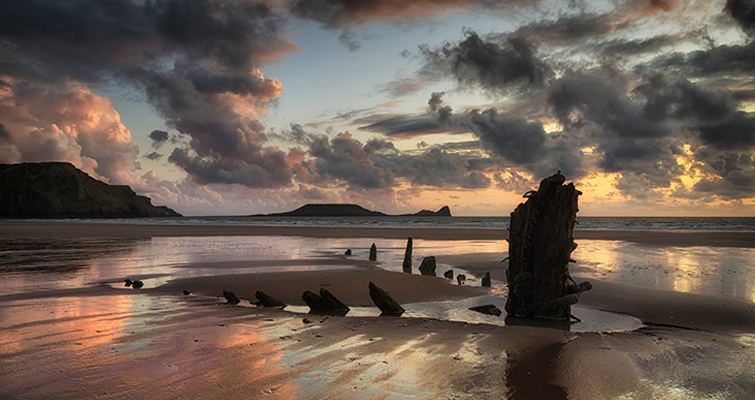
Image by Leighton Collins.
Nevertheless, although the ship’s skeletal structure contributes to a captivating landscape, a closer look reveals a captivating texture created by decaying wood transformed into a biodiverse habitat. The wood, rotten to its core, adorned with moss, and weathered by decades, offers a truly unique and unparalleled texture. In fact, it has the potential to serve as an exceptional displacement map.

Image by Artic_photo.
In my hometown, there is an old harbor housing several boats that have long ceased their voyages. However, reaching them would require traversing treacherous quicksand. Naturally, it is essential to exercise caution and approach the abandoned vessel only if it is safe to do so.
Rusted By Seawater Textures
While the aged skeletal remains of a wooden ship contribute an element of graceful beauty to the seascape, piles of rusted metal lack the same kind of elegance. Nevertheless, they offer equal potential for capturing intriguing textures through photography.
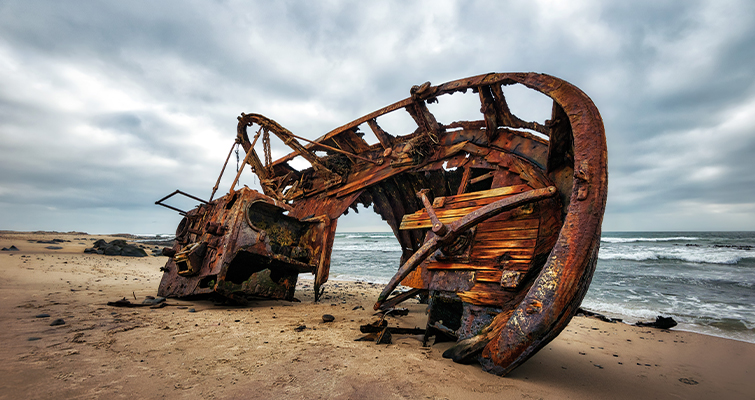
Image by Lukas Bischoff Photograph.
When ships made of metal are wrecked and exposed to saltwater, whether from tides or sea spray, they undergo substantial rusting. Consequently, the rust formation on these shipwrecks differs from the rust you typically encounter on the side of your garage. The presence of deep grooves and corrosive erosion can resemble scarred skin to some extent, making them ideal subjects for capturing texture photographs.

Image by Johnny Habell.
In the event that your location does not have a shipwreck (which is quite unlikely), you can alternatively seek out a rainwater drain pipe, which is likely to exhibit similar signs of erosion.

Image by kailim.
Furthermore, if the drain or sewage pipe directly connects to the sea and is exposed to the tides, there is a high probability of moss and seaweed accumulation on the pipe’s surface. This additional presence of moss and seaweed contributes to the sporadic and unpredictable nature of the texture.

Image by gunungkawi.
The juxtaposition of vibrant green sea moss against rusted metal gives rise to a distinctive contrast rarely seen elsewhere, enabling the creation of unique designs. As an illustration, in the image below, I employed the CC sphere effect in After Effects and positioned a space background image behind the moss texture. The result is an otherworldly planet that stands apart from conventional planetary designs in media—a lush, overgrown world with a scorched desert at its core. Venture onto its land at your own risk!
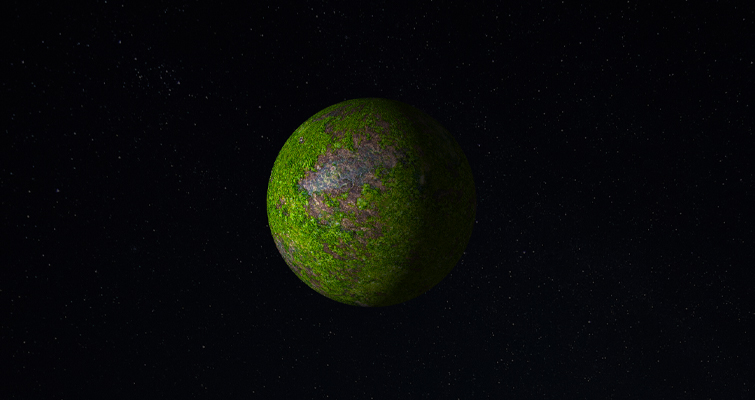
Rock Pools At Low Tide Textures
A fundamental distinction exists between capturing a photograph of a wet rock at a national park and a rock drenched by the receding tide. Owing to coastal erosion and the perpetually evolving environment, rocks along the coast tend to be considerably softer than those near mountains, resulting in distinct textures. They exhibit a smooth surface yet bear the marks of wear and cracks accumulated over years of enduring various damages.

Image by Helen Hotson.
Moreover, these coastal rocks also serve as habitats for marine life, contributing to the diverse range of textures that can be captured. For instance, the rock pools in my local area feature a delightful assortment of limpets and sea moss, creating a speckled adornment.

Running from the planet idea of the moss texture, we can quickly give our alien planet an orbiting moon with a unique rocky texture.
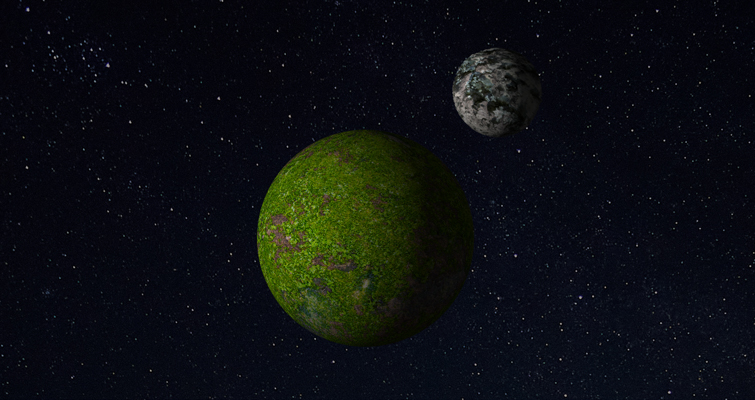
Perhaps we should have titled this article, Unique Textures To Capture At The Beach To Turn Into Planets?
Unique Angles
Before telling you what this texture is, please work it out yourself.
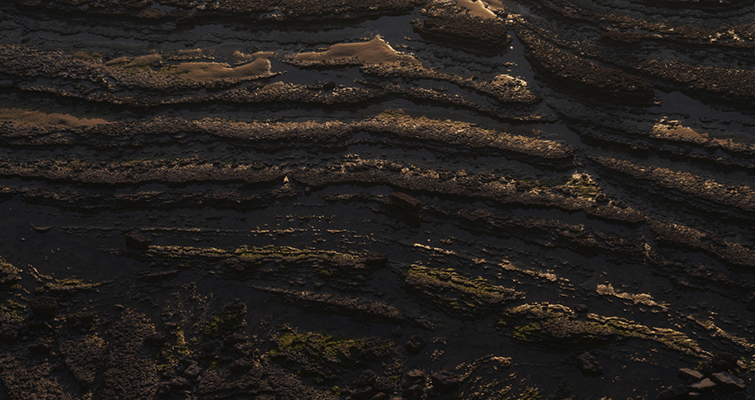
Any ideas? Well, I took this at 70mm and about 150ft up from sea level. When I look at this image, it often confuses my mind about what I’m looking at because of the angle of view. This image encompasses about 300ft of the coastal floor, but it also looks like it could be a close-up of a rock.
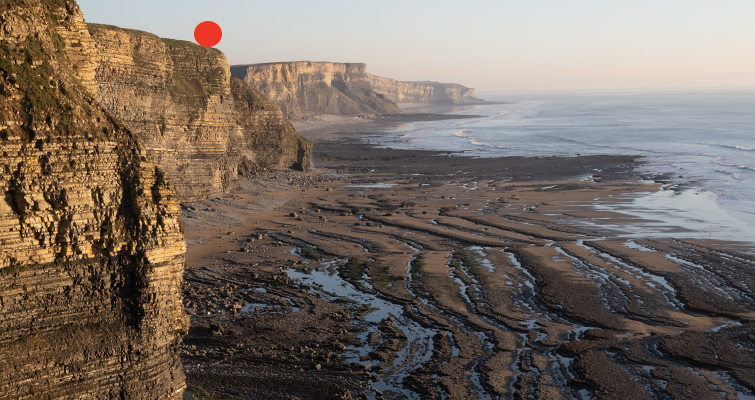
The initial suggestions require proximity to the textures, but if your coastline boasts expansive cliffs, you might discover textures from high above that are not easily visible to the average beachgoer. This presents an opportunity to obtain unique textures that are likely exclusive to you.
Creating a truly alien-looking environment can be a challenge. It’s a personal pet peeve of mine that films depicting alien worlds, they often possess core properties similar to Earth. However, when you compile textures that appear peculiar or unconventional, you’re on your way to crafting something genuinely alien. Regardless of the scenario, I find collecting these textures valuable for those rare instances when I work on a matte painting.
These suggestions are just a few ideas specific to my local surroundings, as I have these elements readily available. However, every location is distinct, so that you may stumble upon even more remarkable textures beyond the aforementioned ideas. If you have any suggestions that are not as obvious, feel free to share them in the comments.
For more inspirational ideas, check out the articles below:
